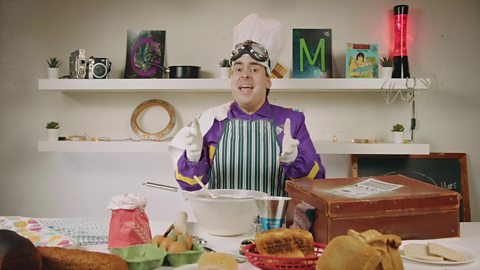Yes! It’s the singing episode! Tune in to watch a certain extra-terrestrial face their fearsand step up to the mic - and discover all the different ways one (very repetitive) phrasecan be sung.
INTERIOR STUDIO - DAY - Cara and Martin stand behind the counter.
CARA: (excited) OH MY GOSH! Her performance at the Grammys, it was amazing! Do you think I would suit green in my roots too? Probably wouldn't be allowed to! And I mean she writes all her songs and…
As Cara continues Martin gets more and more bored. He pulls out his briefcase and takes out a pair of noise cancelling headphones. He puts them on and sits back, enjoying the quiet.
CARA: We're not even related like she is with her brother, but it's ok…
INTERIOR STUDIO - EVEN LATER - Martin is fast asleep with a sleep mask on as Cara continues to talk.
CARA: (excited) She's just so so cool! I am like her number one fan!
INTERIOR STUDIO - NIGHT - A skeleton is placed where Martin sat. Cara is still babbling on, until suddenly she loses her voice. She looks in panic at the camera.
INTERIOR STUDIO - THE NEXT MORNING - Martin enters, throwing the skeleton out of the chair.
MARTIN: See you later Joe.
Cara looks sadly at Martin.
MARTIN: What’s wrong Cara? You finally ran out of things to say about Billie Eyelash? Ha!
Cara shakes her head.
MARTIN: What then?
CARA: (mouthing the words) I’ve lost my voice.
MARTIN: I can’t hear you.
Cara holds up a cue card.
MARTIN reading cue card: I’ve lost my voice.
Martin gasps and his face turns to fear.
MARTIN reading cue card: It’s my own fault, as I have been practicing for the episode.
Martin looks on nervously.
MARTIN reading cue card: But! The show must go on!
MARTIN reading cue card: Therefore, I leave my performing privileges to my good friend
Martin looks around frantically for anyone else but him.
**MARTIN reading cue card:**And long-standing colleague.
Martin grabs Joe the skeleton, ignoring Cara's cue card.
MARTIN: Joe the skeleton everybody, give him a big hand!
Cara shakes her head. Martin gives up and, putting the skeleton down, reads the cue card.
MARTIN reading cue card: (scared) My loyal co-host, Martin the Martian.
Cara nods her head. Martin is nervous.
TITLE SEQUENCE.
MARTIN: Cara! You can’t expect me to present and sing through this entire episode, do you?
Cara nods her head.
MARTIN: What do you want me to do?
Cara holds up a cue card.
MARTIN reading cue card: Speaking
MARTIN: (pleasantly surprised) I can do that.
MARTIN reading cue card: (whispering) Whispering?
MARTIN reading cue card: (shouting) SHOUTING?! DONE!
MARTIN reading cue card: (humming) Humming. Got it.
MARTIN reading cue card: Hissssssing. Sssssure.
Cara hold up a cue card that says 'SINGING'.
Martin shakes his head. Cara nods. She mimes to Martin to lower his shoulders and gets him to stand with his feet shoulder width apart. Cara closes her eyes and inhales before motioning to sing. She gets Martin to do the same. Martin repeats the sequence and begins to sing a beautiful high D. He opens his eyes.
Cara's cue card: AH
Cara's cue card: MAZE
Cara searches for the last cue card.
MARTIN: Ah-maze what? AH-MAZE what?!
Cara's cue card: ING
MARTIN: Amazing? No way!
Cara nods enthusiastically. She holds up another cue card that says 'I THINK WE'RE READY' and they both nod.
INTERIOR STUDIO - DAY - Cara and Martin sit at the counter. Cara has her cue cards while Martin has his briefcase in front of him.
MARTIN reading cue card: Hi Guys, It’s me Cara.
Cara looks confused.
MARTIN: Eh, she’s Cara, I’m Martin. And this afternoon we, I, (in a dramatic voice) have been sinnnnnnging!
Martin sings a long high note with lots of volume and vibrato.
MARTIN: In different styles and (in a dramatic voice) with lots of expression!
Cara looks amused.
MARTIN: I can’t wait to share my favourite song in the whole universe with you! My conductor Cara…
Cara holds up a cue card with 'CONDUCTOR' and an arrow pointed at her.
MARTIN: …will be keeping track by tapping a repeated rythm on her foot as well as holding up cues forme to sing in different ways.
Martin looks worried.
MARTIN: Let’s get this show on the road!
Martin ties a cape around his neck, daredevil style and they begin the song.
MARTIN: (singing) Kaboom! Splat! Wallop and Zap!
Cara's cue card: SHORT NOTES
MARTIN: (quicker) Kaboom! Splat! Wallop and Zap! Splish-splash, Pop! Squelch, squelch, squelch!
Cara's cue card: HIGH NOTES.
MARTIN: (singing high notes) Kaboom! Splat! Wallop and Zap! Kaboom! Splat! Wallop and Zap!
Cara's cue card: LOW NOTES
MARTIN: (singing low) Splish-splash Pop! Squelch, squelch, squelch!
Cara's cue card: POSH VOICE
MARTIN: (in a posh voice) Kaboom! Splat! Wallop and Zap! Kaboom! Splat! Wallop and Zap! Splish-splash Pop! Squelch, squelch, squelch!
Cara's cue card: SILLY VOICE
MARTIN: (in a silly voice) Kaboom! Splat! Wallop and Zap! Kaboom! Splat! Wallop and Zap! Splish-splash Pop! Squelch, squelch, squelch!
Cara's cue card: SCARY VOICE
MARTIN: (in a scary voice) Kaboom! Splat! Wallop and Zap! Kaboom! Splat! Wallop and Zap!
Cara's cue card: MARTIAN VOICE
MARTIN: (in a Martian voice) Splish-splash djfhsjf sdfhsjfsdf hfjsfjskf sjkfsdjkfhs sjkhsdjkfs!
As the song ends Cara, looking surprised, coughs and clears her throat.
CARA: (in disbelief, relief) Martin! My Voice! It’s back! (singing) Oooh, I can't believe it, my vooiice iiis baaaack! Oh, that was so hard not being able to speak for that long! I nearly went crazy!
Martin looks worried.
CARA: But now I’m here and I’m not going to stop talking ha! Billy Eyelash though, she’s just amazing. And while I couldn’t speak, I thought of so many good ideas for our next video…
Martin puts on his noise-cancelling headphones and Cara's voice fades away.
CARA: (rambling) It’s just going to be so so good! We’re going to have loads of things… We’re going to have fire! Fireworks!
Martin closes his eyes and smiles and nods as he enjoys the peace and quiet again.
THE END.
Singing and vocal sounds are music and sounds created by the voice.
We can sing in so many different styles - high, low, short, long, quiet, loud, fast, slow and withlots of different voices - silly voice, posh voice, scary voice, excited voice, thinking voice.
Different vocal sounds can be created by whispering, speaking, shouting, humming, hissing andclicking.
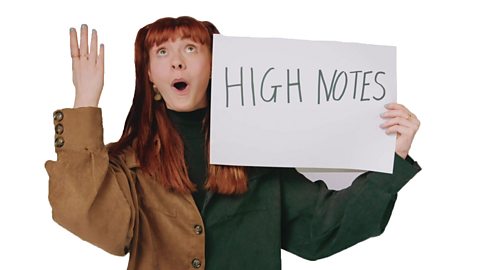
When singing, it is important to remember to sing in tune and with lots of expression. This canbe helped by breathing regularly at appropriate intervals between words.
Keeping a steady beat throughout the song by tapping, clapping or playing an instrument can also help to support thesong with a consistent pulse.
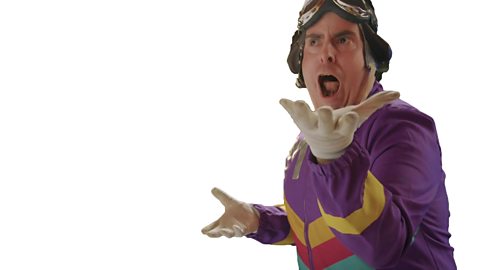
Actions
Actions can be used to help express the lyrics and style of the music.
When singing, we can use actions and movements to help express the words in the music.Actions can also be followed as an instruction for performance. For example, a teacher mightconduct the class and give signals with their hands for the class to respond to.

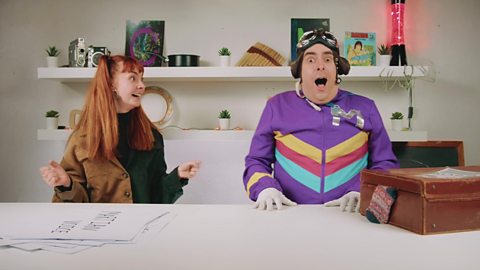
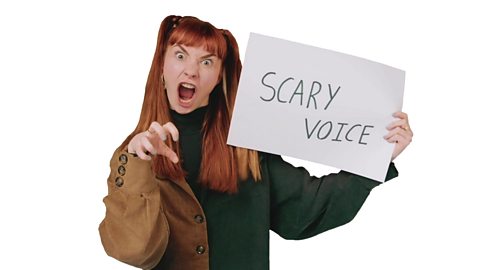
Sing Off
With some friends, divide into two groups and have a sing off! Each group takes turns singing a verse in adifferent style… Will loud beat quiet? Will a scary voice overpower a squeaky voice? Let’s see!

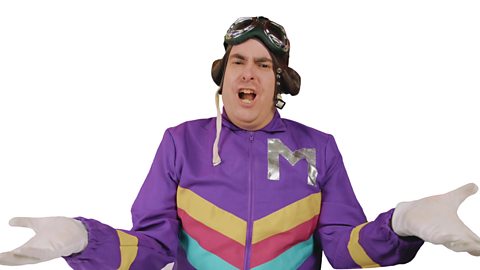
Body Percussion
Just like Cara and Martin, you can use your voice and body in different ways to create sound -try coming up with as many as possible. Why not start with humming, whistling and whispering!
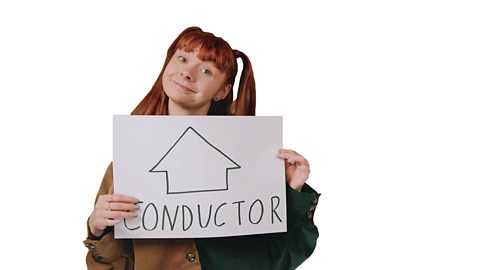
Musical Charades
Have a friend or family member sing a well known song, repeating it over and over. Withoutsaying a word, use your hands, eyes, and face to give instructions and silently conduct withactions to get them to perform in different ways.

More on Singing, performing and sound
Find out more by working through a topic
- count5 of 6

- count6 of 6
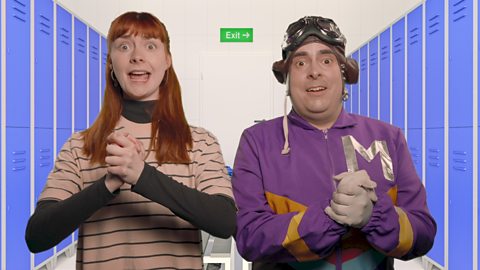
- count1 of 6
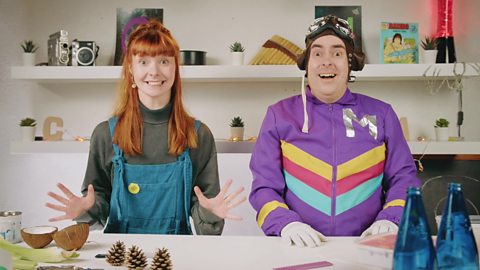
- count2 of 6
